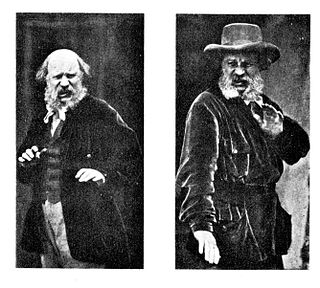Related Research Articles

Altruism is the principle and practice of concern for the well-being and/or happiness of other humans or animals largely independent of that person's opinion of or reaction to oneself. While objects of altruistic concern vary, it is an important moral value in many cultures and religions. It may be considered a synonym of selflessness, the opposite of self-centeredness.
Lawrence Kohlberg was an American psychologist best known for his theory of stages of moral development.
Moral reasoning is the study of how people think about right and wrong and how they acquire and apply moral rules. It is a subdiscipline of moral psychology that overlaps with moral philosophy, and is the foundation of descriptive ethics.
Sympathy is the perception of, understanding of, and reaction to the distress or need of another life form.
Moral Psychology is the study of human thought and behavior in ethical contexts. Historically, the term "moral psychology" was used relatively narrowly to refer to the study of moral development. This field of study is interdisciplinary between the application of philosophy and psychology. Moral psychology eventually came to refer more broadly to various topics at the intersection of ethics, psychology, and philosophy of mind. Some of the main topics of the field are moral judgment, moral reasoning, moral satisficing, moral sensitivity, moral responsibility, moral motivation, moral identity, moral action, moral development, moral diversity, moral character, altruism, psychological egoism, moral luck, moral forecasting, moral emotion, affective forecasting, and moral disagreement.
C. Daniel Batson is an American social psychologist. He has two doctoral degrees, in theology and psychology. Batson obtained his doctorate under John Darley and taught at the University of Kansas. He retired in 2006 and now is an emeritus professor in the psychology department of the University of Tennessee. He is best known for his contributions to the social psychology of altruism, empathic concern, and psychology of religion.
Empathy-altruism is a form of altruism based on moral emotions or feelings for others.

Jonathan David Haidt is an American social psychologist and author. He is the Thomas Cooley Professor of Ethical Leadership at the New York University Stern School of Business. His main areas of study are the psychology of morality and moral emotions.

Determination is a positive emotional feeling that promotes persevering towards a difficult goal in spite of obstacles. Determination occurs prior to goal attainment and serves to motivate behavior that will help achieve one's goal.

Admiration is a social emotion felt by observing people of competence, talent, or skill exceeding standards. Admiration facilitates social learning in groups. Admiration motivates self-improvement through learning from role-models.
Prosocial behavior, or intent to benefit others, is a social behavior that "benefit[s] other people or society as a whole", "such as helping, sharing, donating, co-operating, and volunteering". Obeying the rules and conforming to socially accepted behaviors are also regarded as prosocial behaviors. These actions may be motivated by culturally influenced value systems; empathy and concern about the welfare and rights of others; egoistic or practical concerns, such as one's social status or reputation, hope for direct or indirect reciprocity, or adherence to one's perceived system of fairness; or altruism, though the existence of pure altruism is somewhat disputed, and some have argued that this falls into the philosophical rather than psychological realm of debate. Evidence suggests that prosociality is central to the well-being of social groups across a range of scales, including schools. Prosocial behavior in the classroom can have a significant impact on a student's motivation for learning and contributions to the classroom and larger community. In the workplace, prosocial behaviour can have a significant impact on team psychological safety, as well as positive indirect effects on employee's helping behaviors and task performance. Empathy is a strong motive in eliciting prosocial behavior, and has deep evolutionary roots.
Empathic concern refers to other-oriented emotions elicited by, and congruent with the perceived welfare of, someone in need. These other-oriented emotions include feelings of tenderness, sympathy, compassion and soft-heartedness.
The negative-state relief model states that human beings have an innate drive to reduce negative moods. They can be reduced by engaging in any mood-elevating behaviour, including helping behaviour, as it is paired with positive value such as smiles and thank you. Thus negative mood increases helpfulness because helping others can reduce one's own bad feelings.

Helping behavior refers to voluntary actions intended to help others, with reward regarded or disregarded. It is a type of prosocial behavior.

Disgust is an emotional response of rejection or revulsion to something potentially contagious or something considered offensive, distasteful or unpleasant. In The Expression of the Emotions in Man and Animals, Charles Darwin wrote that disgust is a sensation that refers to something revolting. Disgust is experienced primarily in relation to the sense of taste, and secondarily to anything which causes a similar feeling by sense of smell, touch, or vision. Musically sensitive people may even be disgusted by the cacophony of inharmonious sounds. Research has continually proven a relationship between disgust and anxiety disorders such as arachnophobia, blood-injection-injury type phobias, and contamination fear related obsessive–compulsive disorder.

Awe is an emotion comparable to wonder but less joyous. On Robert Plutchik's wheel of emotions awe is modeled as a combination of surprise and fear.
Moral foundations theory is a social psychological theory intended to explain the origins of and variation in human moral reasoning on the basis of innate, modular foundations. It was first proposed by the psychologists Jonathan Haidt, Craig Joseph, and Jesse Graham, building on the work of cultural anthropologist Richard Shweder. More recently, Mohammad Atari, Jesse Graham, and Jonathan Haidt have revised some aspects of the theory and developed new measurement tools. The theory has been developed by a diverse group of collaborators and popularized in Haidt's book The Righteous Mind. The theory proposes that morality is "more than one thing", first arguing for five foundations, and later expanding for six foundations :
A functional account of emotions posits that emotions facilitate adaptive responses to environmental challenges. In other words, emotions are systems that respond to environmental input, such as a social or physical challenge, and produce adaptive output, such as a particular behavior. Under such accounts, emotions can manifest in maladaptive feelings and behaviors, but they are largely beneficial insofar as they inform and prepare individuals to respond to environmental challenges, and play a crucial role in structuring social interactions and relationships.
Moral emotions are a variety of social emotions that are involved in forming and communicating moral judgments and decisions, and in motivating behavioral responses to one's own and others' moral behavior. As defined by Jonathan Haidt, moral emotions "are linked to the interests or welfare either of a society as a whole or at least of persons other than the judge or agent". A person may not always have clear words to articulate, yet simultaneously knows it to be true.

In the philosophy of effective altruism, an altruistic act such as charitable giving is considered more effective, or cost-effective, if it uses a set of resources to do more good per unit of resource than other options, with the goal of trying to do the most good. Following this definition of effectiveness, researchers in psychology and related fields have identified psychological barriers to effective altruism that can cause people to choose less effective options when they engage in altruistic activities such as charitable giving. These barriers can include evolutionary influences as well as motivational and epistemic obstacles.
References
- ↑
- Thomson, Andrew L.; Siegel, Jason T. (20 December 2016). "Elevation: A review of scholarship on a moral and other-praising emotion". The Journal of Positive Psychology. 12 (6): 628–638. doi:10.1080/17439760.2016.1269184. S2CID 151370046.
- Pohling, Rico; Diessner, Rhett (December 2016). "Moral Elevation and Moral Beauty: A Review of the Empirical Literature". Review of General Psychology. 20 (4): 412–425. doi:10.1037/gpr0000089. S2CID 151508946.
- 1 2 Aquino, Karl; Brent McFerran; Marjorie Laven (April 2011). "Moral identity and the experience of moral elevation in response to acts of uncommon goodness". Journal of Personality and Social Psychology. 100 (4): 703–718. doi:10.1037/a0022540. PMID 21443375.
- 1 2 3 4 5 6 7 Haidt, Jonathan (2003). "Elevation and the positive psychology of morality". Flourishing: Positive psychology and the life well-lived . pp. 275–289. doi:10.1037/10594-012. ISBN 1-55798-930-3.
- ↑ Thoreau, Henry David (October 1863). "Life Without Principle". Atlantic Monthly. XII (72): 4874–495.
- ↑ Fredrickson, B. L. (2004). "The broaden-and-build theory of positive emotions". Philosophical Transactions of the Royal Society B: Biological Sciences. 359 (1449): 1367–1378. doi:10.1098/rstb.2004.1512. PMC 1693418 . PMID 15347528.
- ↑ Haidt, Jonathan (7 March 2000). "The Positive Emotion of Elevation". Prevention & Treatment. 3 (1). doi:10.1037/1522-3736.3.1.33c.
- ↑ Algoe, Sara; Haidt, Jonathan (2009). "Witnessing Excellence in Action: The other-praising emotions of elevation, admiration, and gratitude". Journal of Positive Psychology. 4 (2): 105–127. doi:10.1080/17439760802650519. PMC 2689844 . PMID 19495425.
- 1 2 3 4 Shiota, Michelle; Thrash, T.M.; Danvers, A.F.; Dombrowski, J.T. (2014). "Transcending the self: Awe, elevation, and inspiration". In Tugade, M; Shiota, M.; Kirby, L. (eds.). Handbook of Positive Emotions. The Guilford Press. pp. 362–377.
- 1 2 Silvers, Jennifer; Haidt, Jonathan (2008). "Moral Elevation Can Induce Nursing". Emotion. 8 (2): 291–295. doi:10.1037/1528-3542.8.2.291. PMID 18410202.
- 1 2 3 Schnall, Simone; Roper, Jean; Fessler, Daniel (2010). "Elevation Leads to Altruistic Behavior". Psychological Science. 21 (3): 315–320. doi:10.1177/0956797609359882. PMID 20424062. S2CID 9329586.
- ↑ Cox, Keith (2010). "Elevation predicts domain-specific volunteerism 3 months later". The Journal of Positive Psychology. 5 (5): 333–341. doi:10.1080/17439760.2010.507468. S2CID 145004175.
- ↑ Erickson, Thane; James Abelson (2012). "Even the downhearted may be uplifted: Moral elevation in the daily life of clinically depressed and anxious adults". Journal of Social and Clinical Psychology. 31 (7): 707–728. doi:10.1521/jscp.2012.31.7.707.
- ↑ Vianello, Michelangelo; Galliani, Maria; Haidt, Jonathan (20 October 2010). "Elevation at work: The effects of leaders' moral excellence" (PDF). The Journal of Positive Psychology. 5 (5): 390–411. doi:10.1080/17439760.2010.516764. S2CID 2594818. Archived from the original (PDF) on 2014-05-12. Retrieved 14 April 2014.
- 1 2 Van Cappellen, Patty; Saroglou, V.; Iweins, C.; Piovesana, M.; Fredrickson, B.L. (13 May 2013). "Self-transcendent positive emotions increase spirituality through basic world assumptions". Cognition & Emotion. 27 (8): 1378–1394. doi:10.1080/02699931.2013.787395. PMID 23662802. S2CID 14031666.
- 1 2 Goodall, Jane (2005). "Primate Spirituality" (PDF). Encyclopedia of Religion and Nature: 1303–1306. Archived from the original (PDF) on 27 March 2014. Retrieved 14 April 2014.